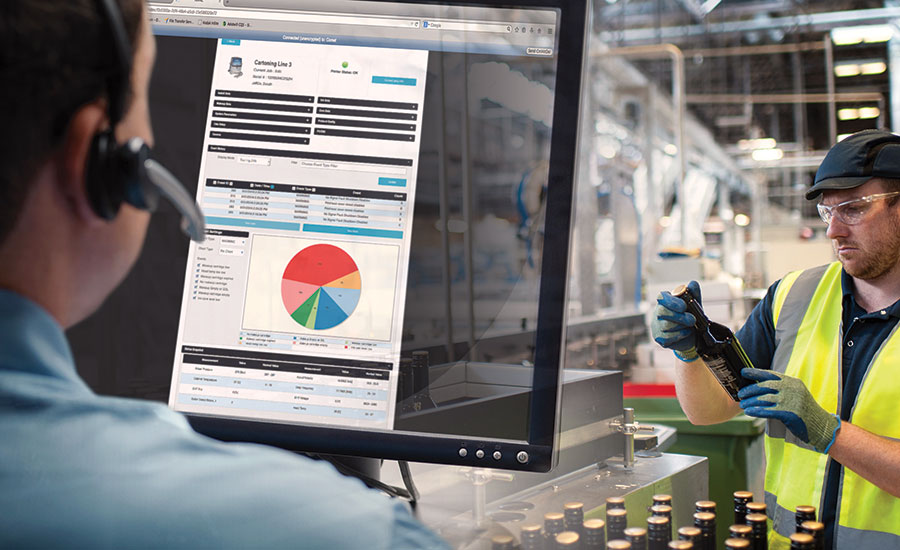The Industrial Internet of Things (IIoT) allows companies to collect and store seemingly unlimited data. For packaging line managers, project managers and plant managers, this translates to data about their line performance, productivity and line equipment. Obtaining this data helps make decisions that can, and do, impact overall plant performance and process improvements.
But for those who lack automation and a straightforward approach to data collection and analysis, harvesting data becomes an exercise in the kind of data you can access and how much, or how little, is required to provide the insight needed to isolate the problem at hand.
With limited resources, gathering data is an obstacle for many because:
- It is difficult to define something unknown, requiring you to make guesstimates.
- There is no guarantee of accurate or consistent data collection performed by humans.
- You have to have a resource (person or equipment) to measure data.
- Data must be archived after it is collected.
- Expertise is required to pull the data and analyze for trends.
In spite of the roadblocks, manufacturers do understand the value of the right data and are working to find ways to use this technology to help improve their packaging lines and processes. And, as the adoption of IIoT continues to accelerate in the industry, we move from not having an adequate means of gathering enough data to suddenly having more data than we know what to do with. This poses a new challenge: learning how to structure and interpret massive quantities of data. I’ve seen manufacturers face real stumbling blocks without experts on staff who understand data architecture and can generate insightful analysis and actionable next steps based on the information gathered.
Collecting the right data for interpretation can quickly become overwhelming for plant managers and executives. However, there are four ways that data management and productivity solutions can help utilize the data derived from existing equipment that can be connected to the IIoT.
Collect more useful data than ever before
Without data collection technology in place, it is safe to say that manufacturers are lucky to have a month’s worth of data collected. It’s even safe to say that the data they currently have only represents half-hour intervals. With advancements in the way the IIoT can be used, it is possible dig down into single minute and single second intervals to help get to the root cause(s) of issues.

The data management technology on your printer connects to the cloud, storing a plethora of data. Having measurements streamlined and simplified with data going directly to the cloud shifts the resource burden from data collection to data analysis. Data management tools provide value at this stage. Manufacturers who have access to these tools are able to get very granular with the information, which they can use to identify immediate trends as well as long-term trends.
Simplify and remove guesswork from data collection
There is no one-size-fits-all scenario for data collection and management. In fact, often times there are issues with first identifying which data should be captured, and then determining what to do with it. Many plants exist in a current state where obtaining and understanding data it is complicated; the data itself is subjective based on the person collecting it and the uniqueness of each plant.
However, if the data already exists in a clean, consistent and useable format via data management technology, it becomes a single exercise. Plant managers can distill the data, and identify key problems and root cause(s). Using statistics and math to evaluate trend lines and control charts, best practice and process can be taught and standardized across the plant.
Neutralize data variance to instill confidence
Without the technology made possible by the IIoT, there is variation in data collection that is indistinguishable from variation in process. Imagine a process that takes a few seconds to complete; a person measures the process with a stop watch. Unfortunately, human reaction time varies from person to person, leaving room for inaccuracies that can be as big as the variation we’re trying to measure. If there is a variation in measurement, the data becomes useless. But with automated data collection, variance can be more fully understood and managed, so as to help eliminate the waste associated with discrepancies in human reaction time or perception.
With advances in IIoT technology, early adopters of data management tools are assured that the captured variances in a process are actually variances and not something else. With this knowledge, many problems can be more readily attacked and confidently resolved with the appropriate countermeasures.
Improve your packaging line productivity and efficiency
When partnered with data visualization and analytics software, advances in the IIoT change what is possible for lean manufacturing improvement initiatives. Manufacturers can capture more data than ever before, and fast-forward through the challenges of interpreting that information, and identifying problems and root cause(s) on the production line.
Moreover, data visualization and analytics software can help accelerate the collection, consistency and accuracy of data. The depth and granularity of automatically collected data helps adopters to more quickly identify areas of concern, reduce waste and prioritize improvement activities. Closing the loop, historical data, both before and after process improvements, can help adopters evaluate the effectiveness of improvements and corrective actions.
Identifying problems faster enables corrective actions to be taken more quickly as well, helping to ensure a more effective and consistent outcome. It’s this outcome that ultimately helps drive and maintain lean initiatives.
Receiving data in real-time also allows for automation of processes that are currently manual. For example, it gives a control engineer the ability to create more closed-loop feedback systems in a production process, such as when monitoring data in Kanban. Based on throughput data, the control engineer can easily identify consumption and anticipate what is needed before the Kanban card is pulled and the spider flagged, essentially eliminating both time and motion waste. Data management technologies can also alert the enterprise resource planning (ERP) software, which then triggers the Kanban system to fill the part, increasing efficiency for each line.
The IIoT is changing the overall landscape of business. Since its inception, manufacturers have access to more data than ever. And while sophisticated automation now makes it possible to capture endless data on the line, it is still difficult for manufacturers to adopt data management technology that helps make the data useful. However, early adopters of data management technologies are finding out what is possible with the expansion of data automation and with it, are finding ways to improve their business and lean process, and drive the bottom line. PS
Fred Susi is the vice president, Global Services, Supplies and Cloud-Based Solutions at Videojet Technologies, where he’s held several senior leadership roles within product management. Prior to his experience at Videojet, Susi held roles in product management, finance and service with Zebra Technologies, Dresser Wayne and Suntronic. He holds an MBA from University of Illinois at Chicago and a BS in Biophysics from University of Illinois-Champaign.


